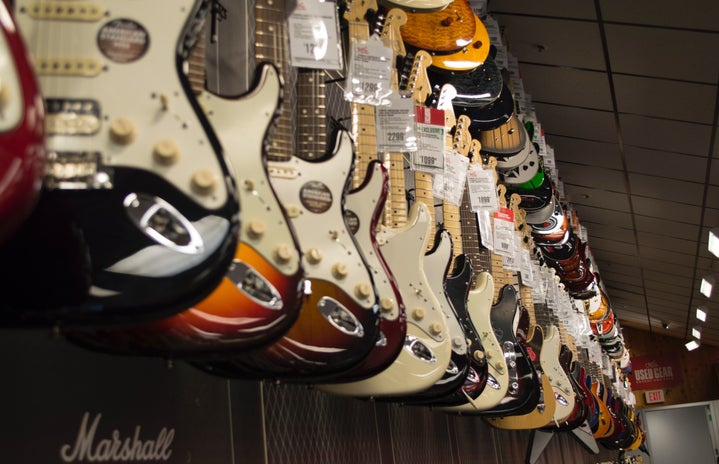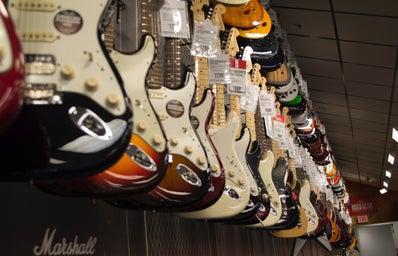August, 1969 – the summer heat of New York was cooling off in the beautiful valleys of the Catskill Mountains. Yet, the grounds of Bethel Park stayed steamy as nearly 50,000 people crowded the grounds around a massive, newly-constructed stage. Venders lined the park, offering food and drink. Individuals prepared for the festivities with dancing, drinking and some less illegal endeavors. On the evening of August 15, the first performers, which included folk legend Joan Baez and world-renowned sitar player Ravi Shankar, took the main stage. The three days that followed shook the musical and social world of the 1960s and put a fitting end to the Summer of Love. Don McLean probably described the scene at Woodstock 1969 the best; “and there we were all in one place, a generation lost in space.”
Woodstock came into creation through the minds of John Roberts, Joel Rosenman, Artie Kornfeld and Michael Lang, natives of New York who wanted to create the ultimate concert experience. Two of the four men had created or worked at music festivals over the previous five years, and were ready to create the festival of their dreams; a free, multi-day exposition of the best pop and rock groups of the decade, all of which were advocating and creating peace for the waiting audience. “Peace” and “love” became not only the cultural buzzwords of the era, but the driving forces behind Woodstock’s creation.
The memory of that weekend – with legendary acts like Jimi Hendrix, Janis Joplin, The Who, Sly and the Family Stone and the Grateful Dead – has left a lasting impression on the music world and Western Culture in general as a time of great social connectedness and harmony. Anniversary concerts have cropped up over the past 50 years, but none have been able to capture the original feeling of that first try. With that in mind, Lang has conspired with several backers for the past four years to recreate the spectacle of Woodstock in its original stomping grounds in August of 2019. For admirers of the original sentiment of Woodstock like myself, a few reservations about the new iteration of this legendary weekend begin to crop up.
Music festivals have acquired a certain look to them these days. There is still a great emphasis on the unity and power of music as a freedom of expression, but the world has changed into a more commercial landscape. Music events like Firefly and Lalapalooza are, more than anything, ideal places to sell one’s “brand”, so to speak. Everything comes with an advertisement; every act posts to their customized social media, saying to their audiences “look at me! Look at me – I am a part of the current social movement!” In 1969, the creators of Woodstock worked tirelessly to raise enough money to make the experience free of charge. However, music takes a lot of effort and money to produce, making most festivals cost hundreds of dollars to individuals in order to produce enough refreshments, space and musical acts. Thus, the need for brand recognition and sponsors which create the space-age look to modern music festivals. But is that what Woodstock should really be about?
Life seemed to hang by a thread when Woodstock came into existence. In the United States, social turmoil was coming to a peak after the assassinations of Robert Kennedy and Dr. Martin Luther King Jr., two political and philosophical advocates for the Civil Rights Movement and other social movements. A growing anti-war sentiment was sweeping the nation as thousands of drafted American soldiers were arriving home dead from the Vietnam War. In a sense, the American public was being continuously disappointed by their government, the nature of American patriotism, and the roots of American life itself. The days brought constant protest against the wrongs that America seemed to be built on; racism, sexism, nationalism and consumerism. At night, the new generation of Americans, embittered by the struggle for their rights, found a cultural revolution planting itself in the performing arts. Musicians were catching on to the scene. Many of them were a part of this protest generation and wrote about those protests and dreams of what they hoped would be the new American way; a way of peace, acceptance and love for all humankind.
If that is the essence of Woodstock, a few things will need to remain the same in the creation of the new Woodstock. For example, the musicians who gathered that August in 1969 were socially aware innovators as well as artists. They were committed to expressing both a critique of the current state of things as well as well as a hope for a new future to the American public through music. A notable example is Jimi Hendrix’s performance of the “Star Spangled Banner” on guitar, where he modified some of the notes to sound like bombs dropping from the sky in keeping with the anti-war sentiment at the time. Will the acts at the new Woodstock be committed to the same message? There are a lot of current acts to choose from; singer-activists like Janelle Monae, Kendrick Lamar and Hozier run large and in-charge in the music scene these days.
Almost 50 years later, the impact and importance of Woodstock can be known because we go through a similar cultural crisis. Today, increasingly troubled foreign relations, government shortcomings, and acts of prejudiced violence make the American public angry, fearful, and tired. Woodstock as it was – an expression of escapism, hope, and love – could be exactly what the American public needs right now. It could be a force to empower and inform like it did back then. As long as it is in the hands of people who really want to create a free, creative, and culturally effective experience, free from capitalist agenda of the modern media industries, then there is a chance that we could see the return of the “generation lost in space.”



